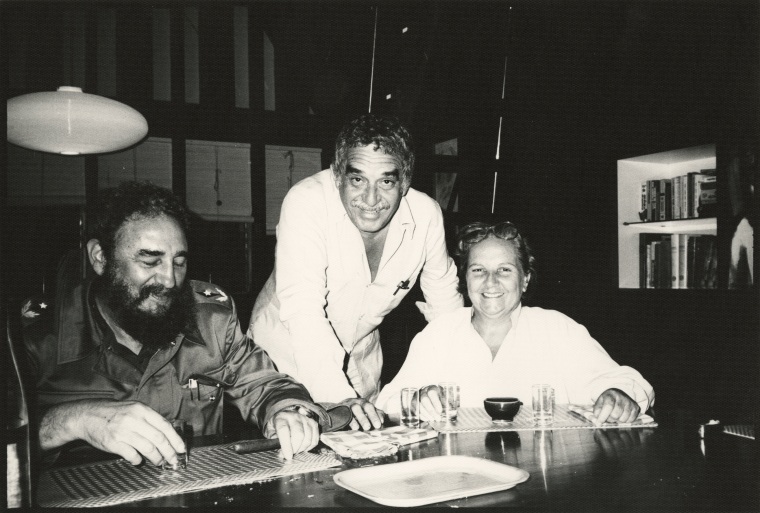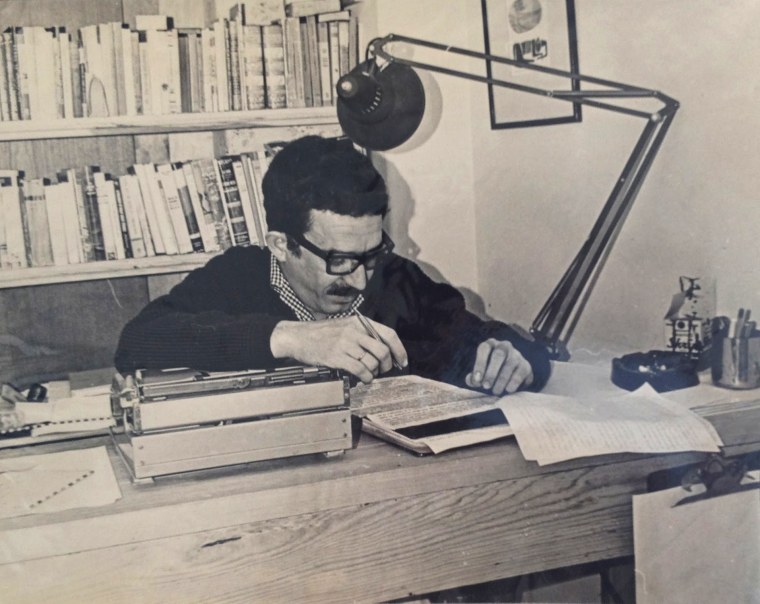Handwritten notes on personalized notecards. The carbon typescript of “El Coronel no tiene quien le escriba.” A copy of “The General in His Labrynth” with emendations in the author’s hand. Photographs, letters and scrapbooks. The simple slate green typewriter where masterworks came to life.
They are among the treasures in the archive of literary giant Gabriel García Márquez which opened last week at the University of Texas in the Harry Ransom Center research library and museum.
The Colombian-born García Márquez, died in April 2014 in Mexico City at age 87. A prolific writer and a towering figure in Latin American history, politics, culture and beyond, García Márquez was best known for his epic “One Hundred Years of Solitude,” for which he received the Nobel Prize for Literature in 1982. A marked-up first draft of his Nobel Prize acceptance speech is contained in the archives, as is an audio recording of the speech.
With “One Hundred Years of Solitude” and other master works, including “Love in the Time of Cholera,” Gabo, as he was known in Latin America, invented worlds in which reality and fantasy co-existed, to the delight of his legions of admirers.
RELATED: Remembering the Extraordinary Gabriel Garcia Marquez
“With the establishment of the Gabriel García Márquez archive, Gabo has entered history,” Ransom Center Director Stephen Enniss said in a statement. “Like a character in one of his own novels, he has entered a place outside of time. Somewhere among these papers Florentino Ariza still waits outside the house of his first love; somewhere a colonel waits patiently for the weekly post. An archive is a timeless thing, and for years to come the materials that have been collected here will give up, to those who are patient, insights into the art of García Márquez.”

University of Texas President Gregory L. Fenves said the García Márquez archive will attract a global research community to Austin.
The archive includes 75 boxes of manuscripts and drafts, research material, screenplays and notebooks, ephemera, including newspaper clippings, 22 scrapbooks and 43 photo albums. Digital materials are to be added later.
Finding aids for the archive are available in English and Spanish.
